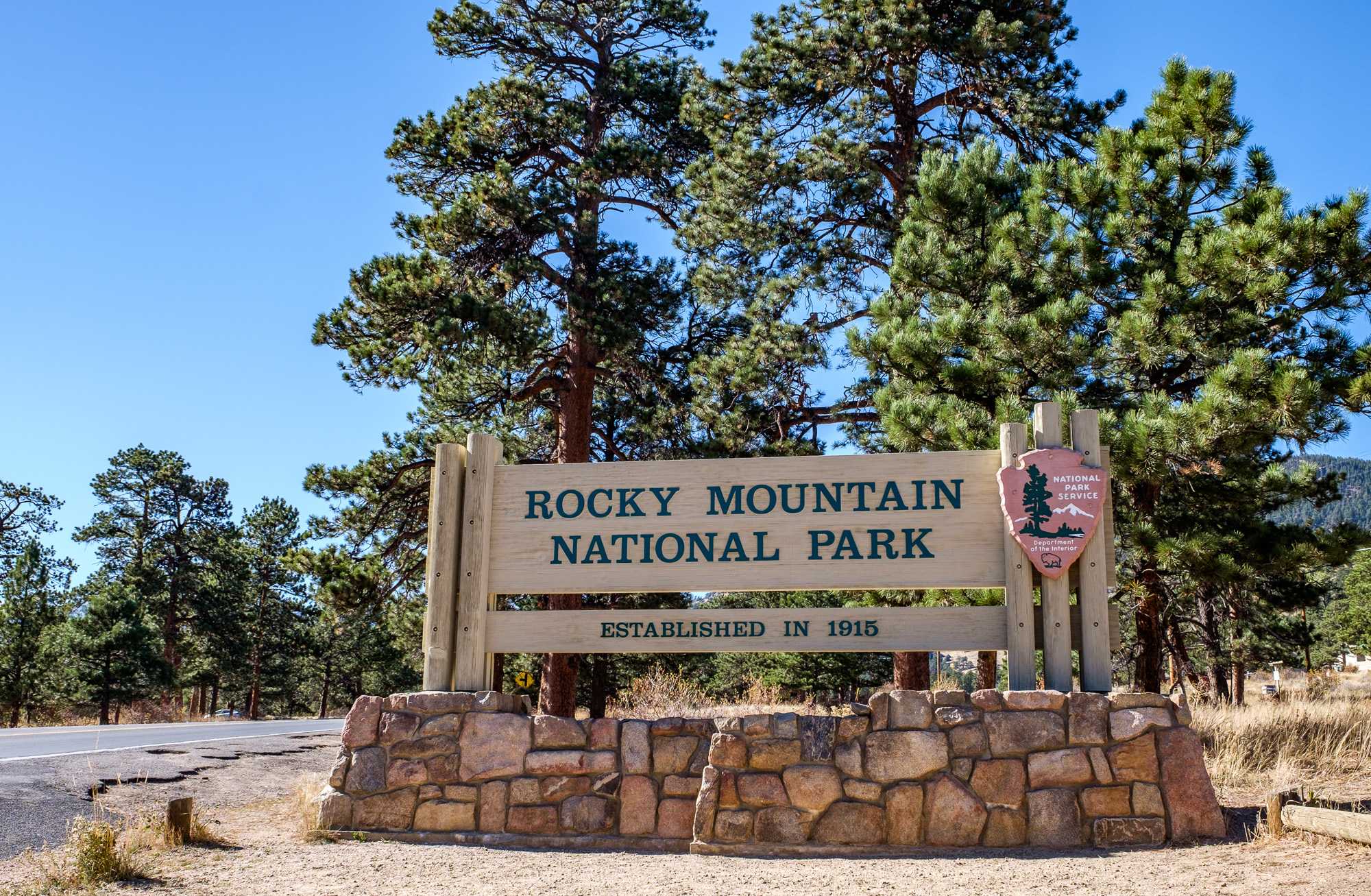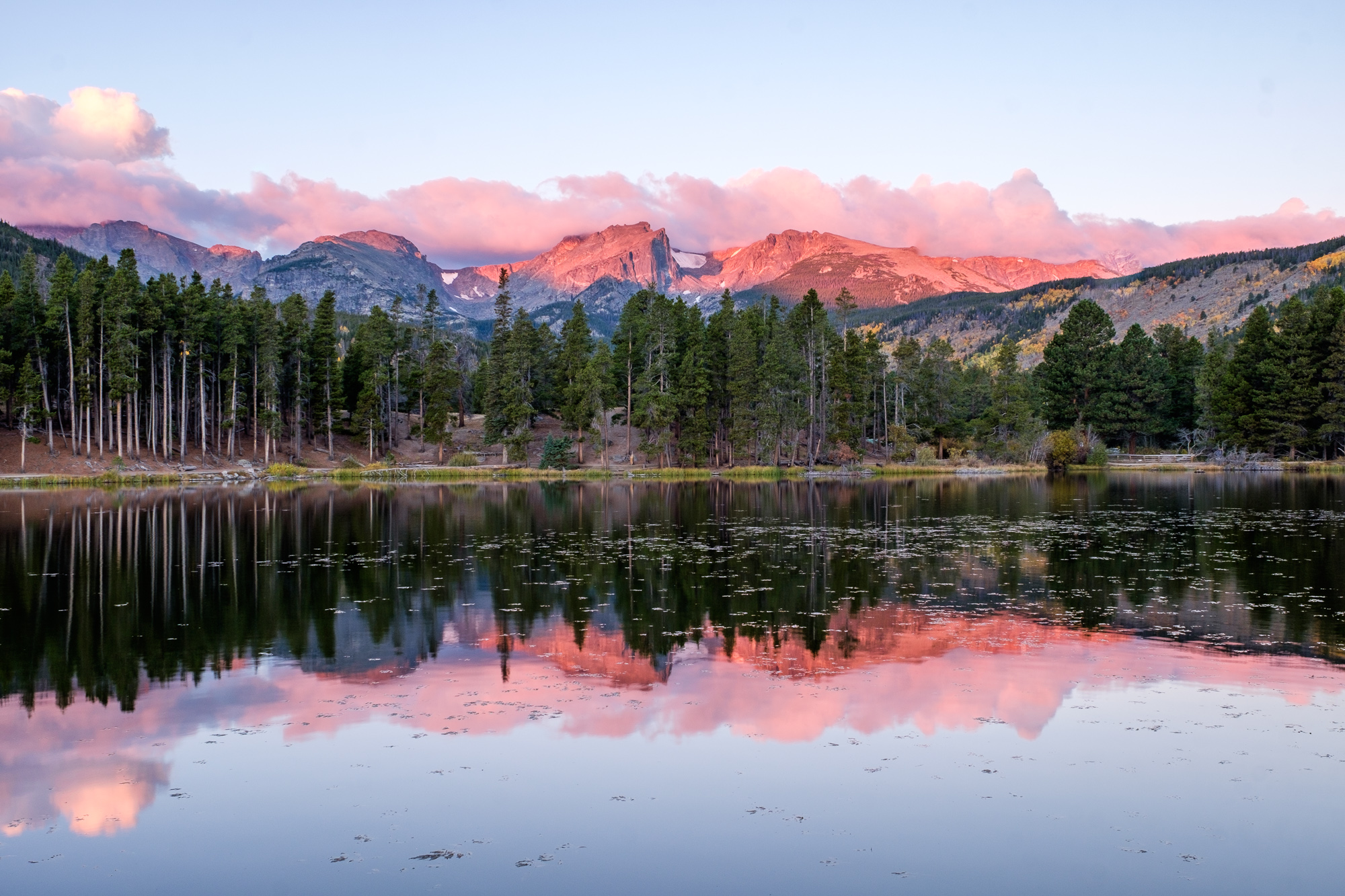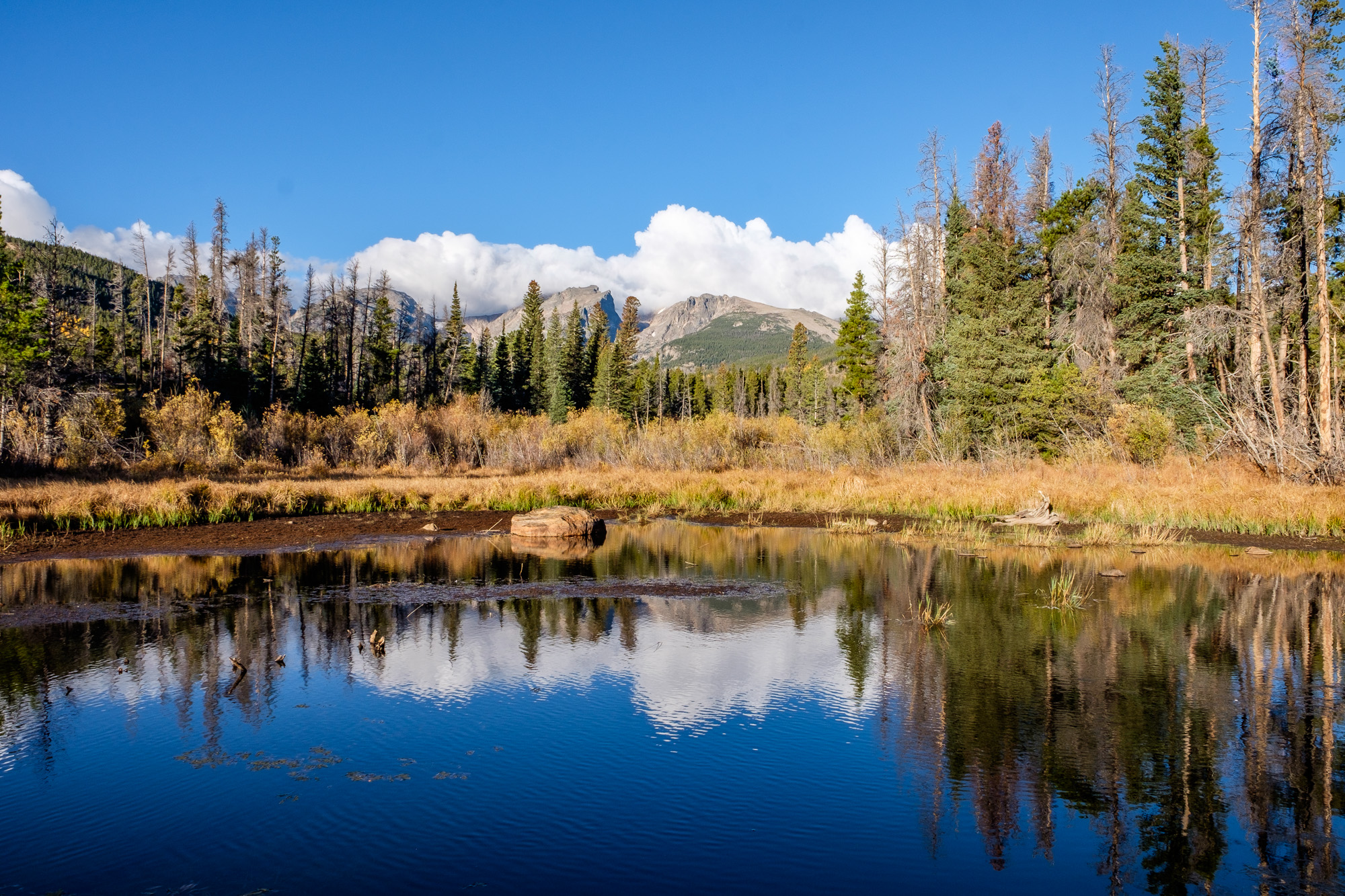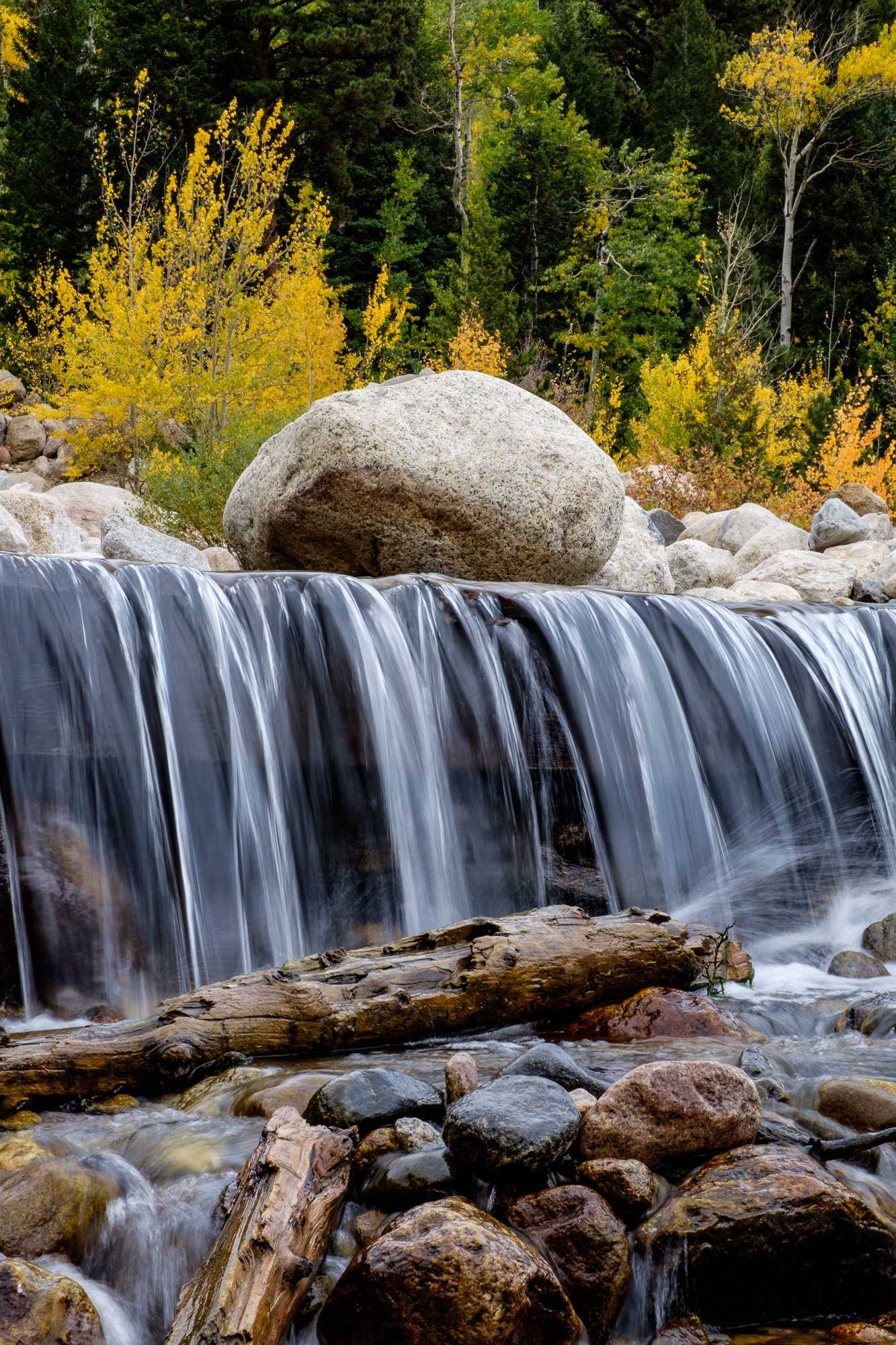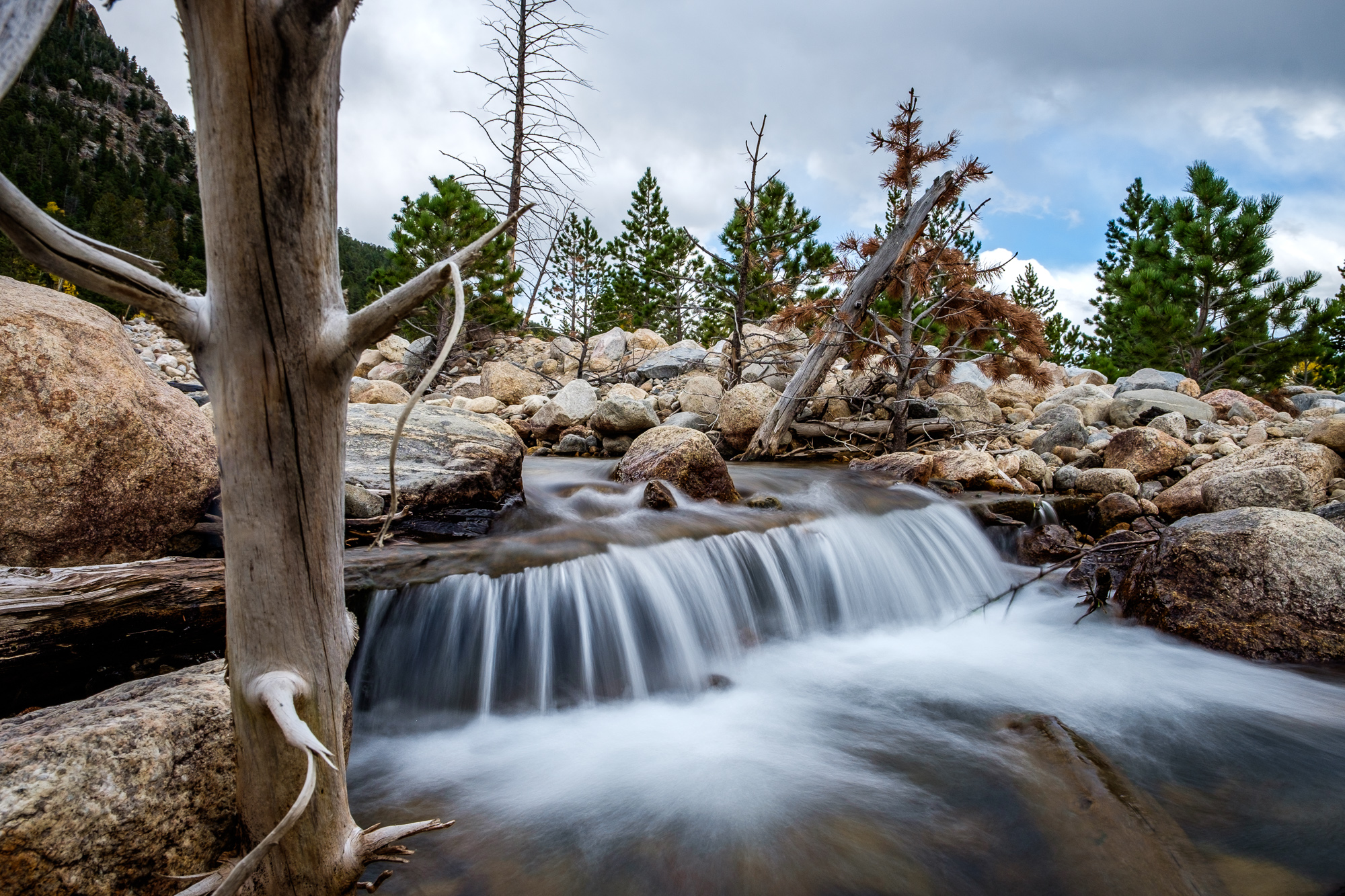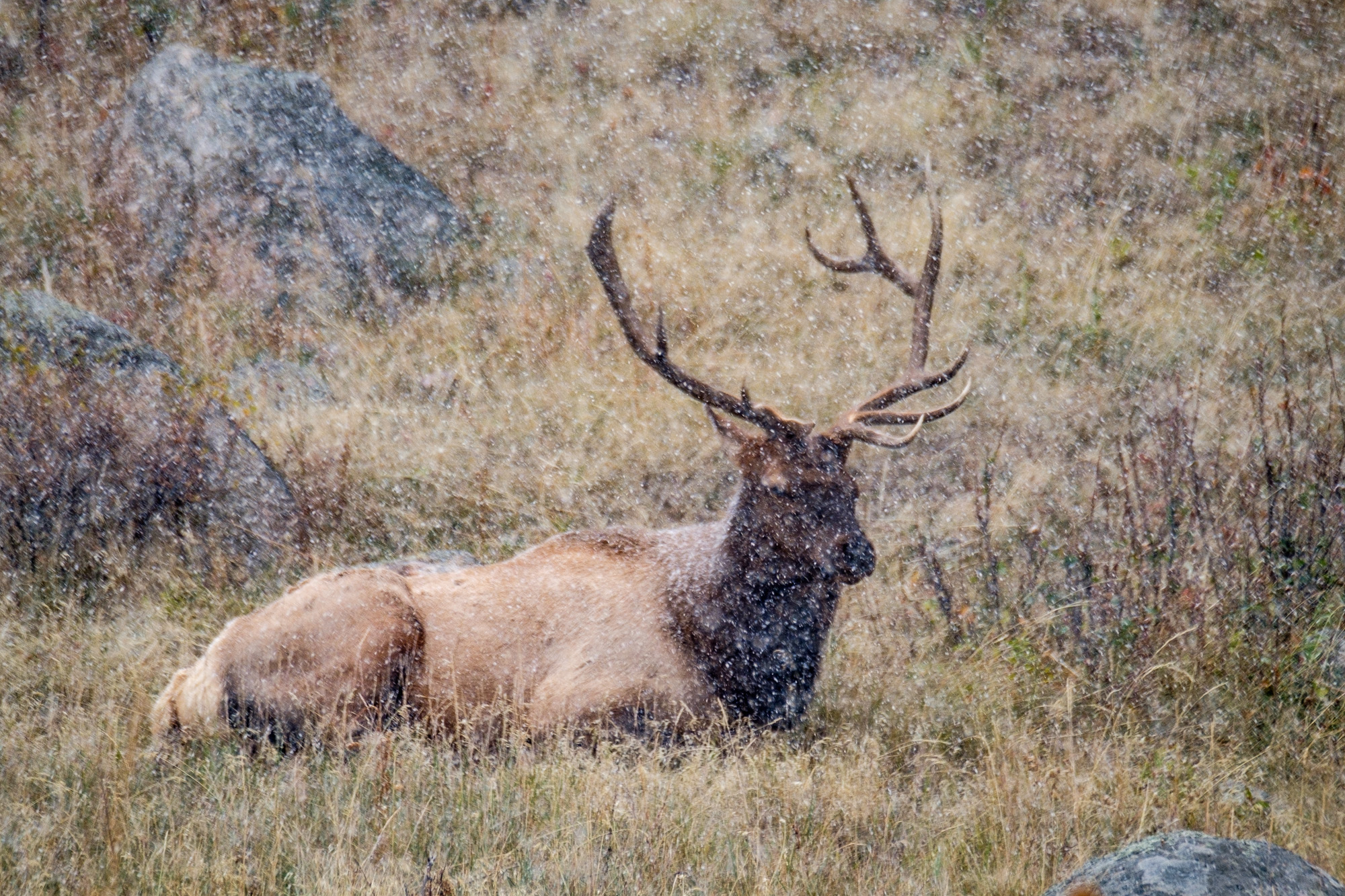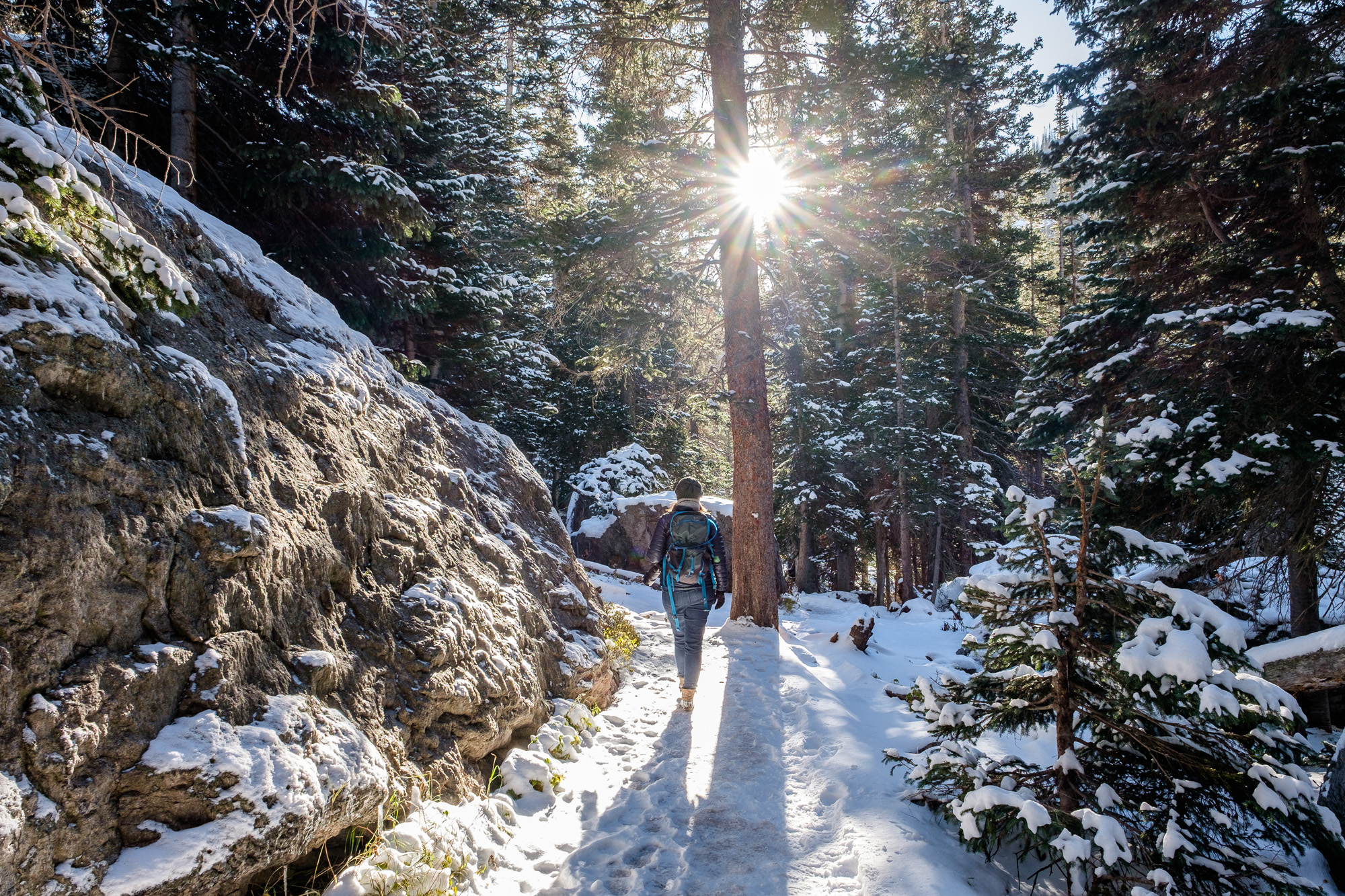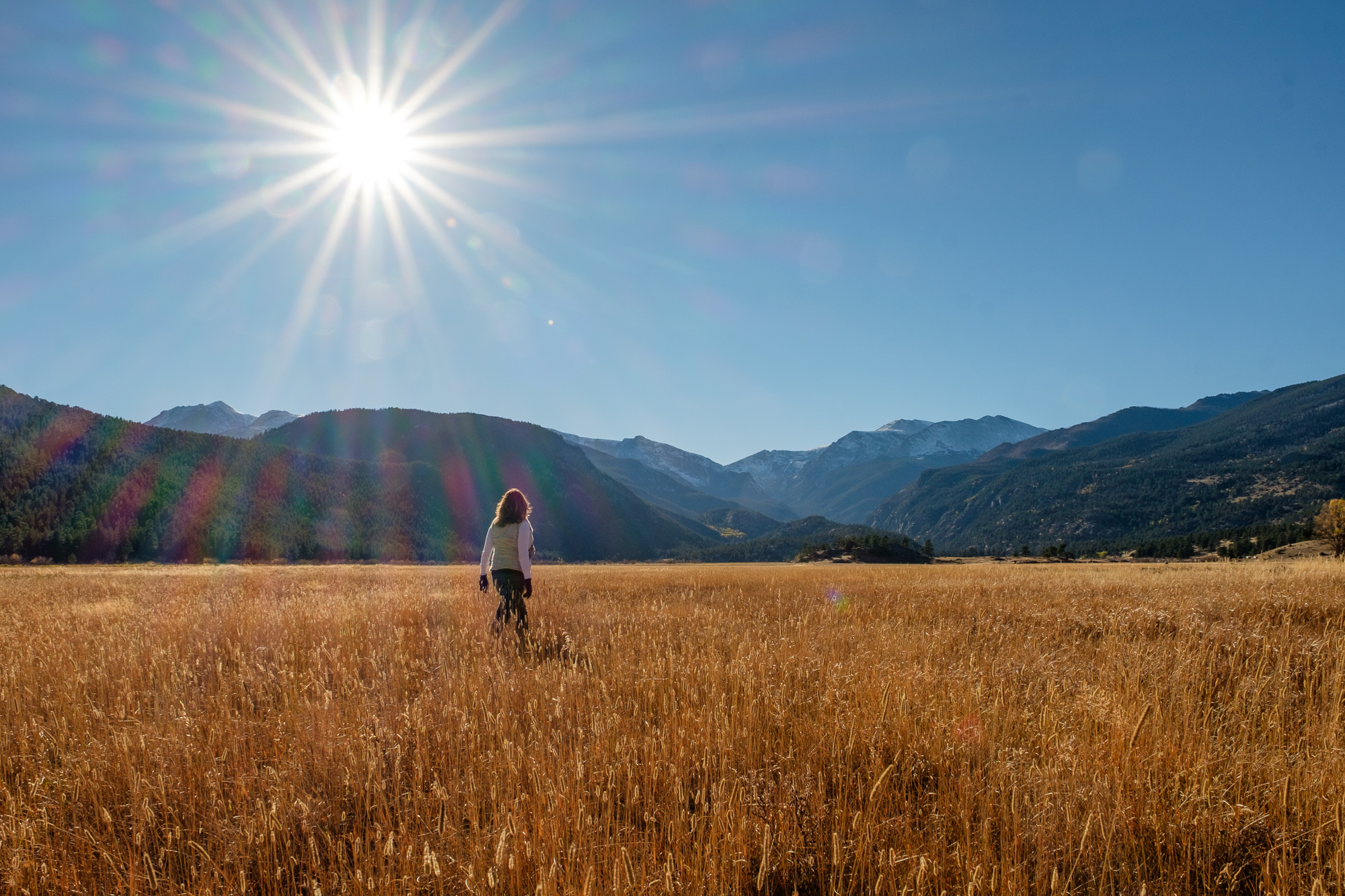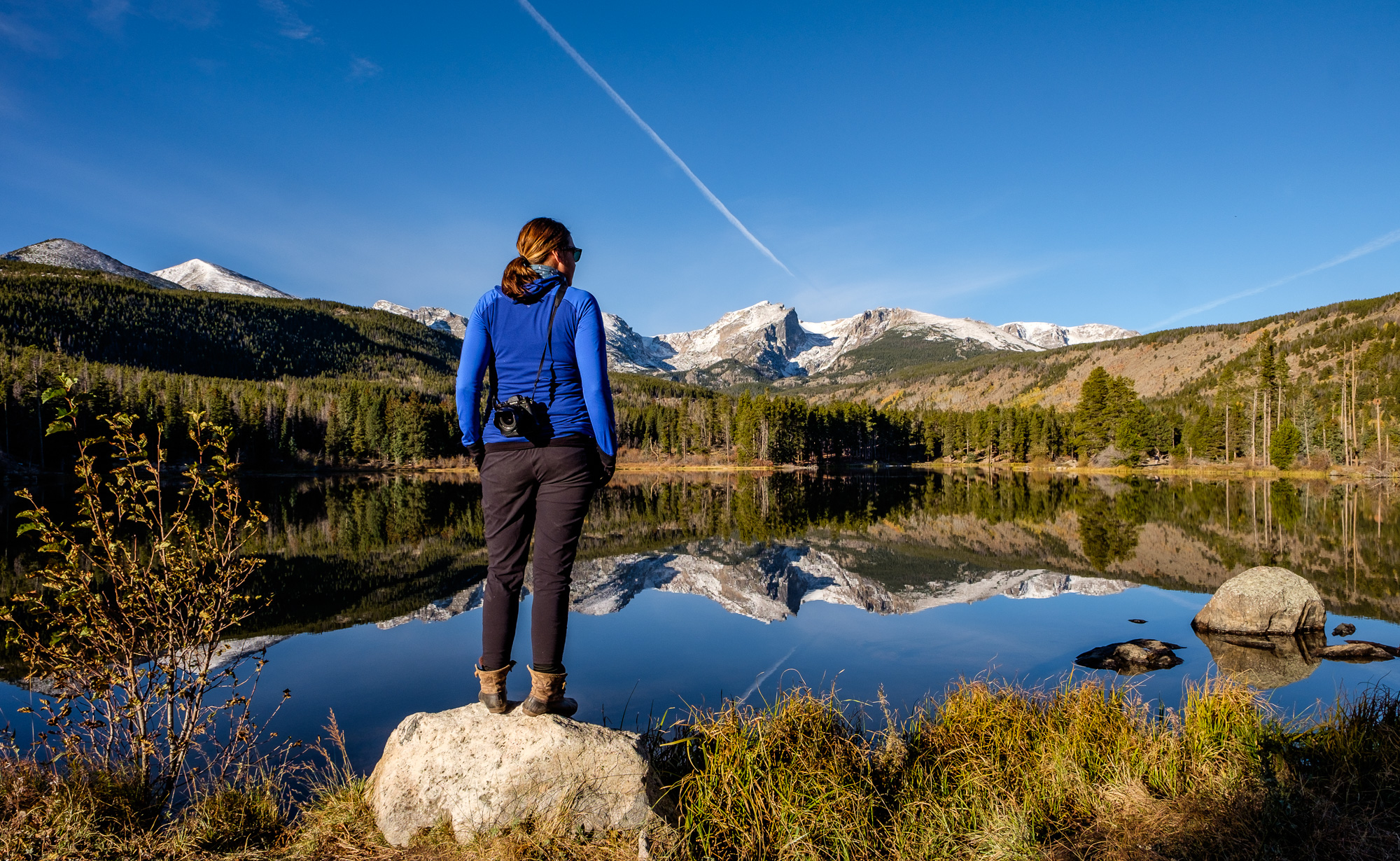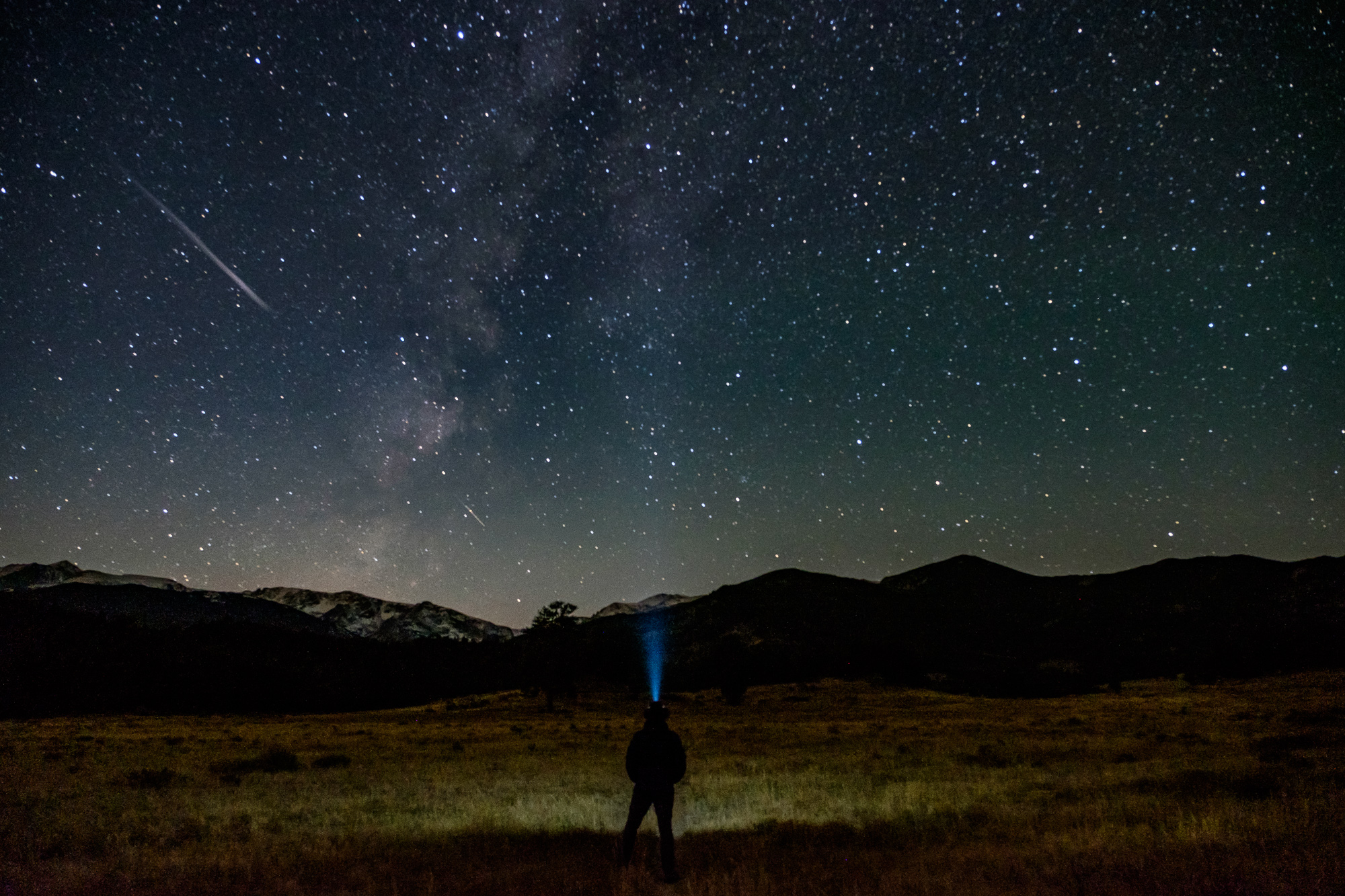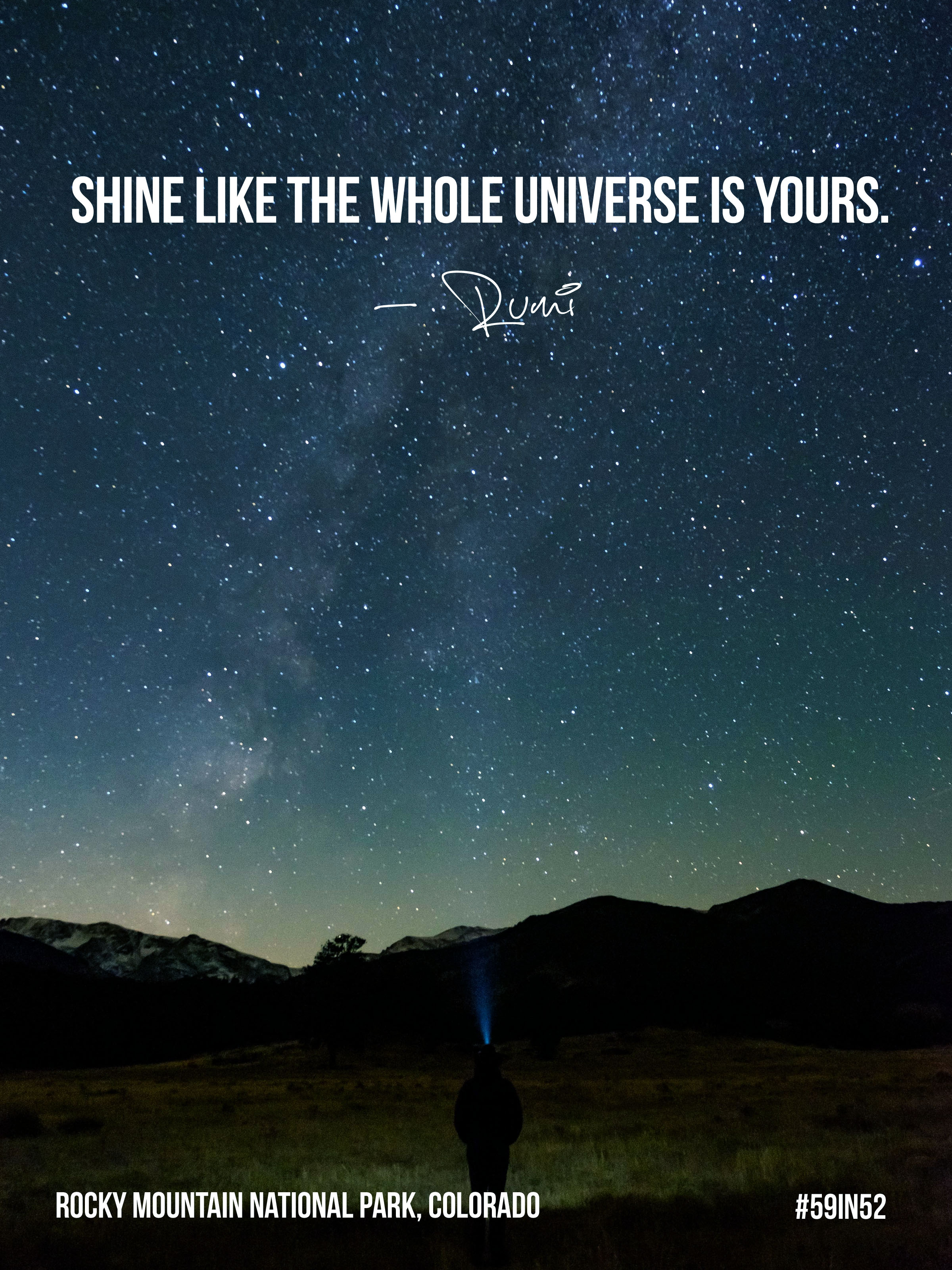Rocky Mountain National Park, Colorado, USA | Park 43/59
“I have dropped into the very place I have been seeking, but in everything it exceeds all my dreams... The scenery is the most glorious I have ever seen, and is above us, around us, at every door.”
8 Things We Love About Colorado's Rocky Mountain National Park
Everyone should visit the Rocky Mountain National Park in Colorado at least once in their lives, if for nothing else than to see some variation of this beautiful scene at Dream Lake... they obviously call it "Dream Lake" for a reason!
70 miles northwest of Denver, somewhere between 8,000 and 14,259 feet, exists one of the most comprehensive ecosystems in all of America’s national parks – that's not a huge surprise considering the range of natural features born of meadows, forests, lakes, tundra, glaciers, and rugged mountain peaks. It is such diversity that makes Rocky Mountain National Park one of the most actively explored in the system. For the low-key, there are plenty of lazy strolls and leisurely drives to be had; and for visitors who are out there to go bigger – hiking, mountaineering, searching for wildlife, taking photographs, rock climbing, horseback riding and other active adventures are all ready for the grab in Colorado’s favorite mountain wilderness. For this article we are going to neck down on some of the aspects of America’s 10th national park that made the biggest impression on us when we visited there in early October. We hope that it will help you plan your own trip to the Rockies this year. Enjoy!
Fall Foliage
Each autumn, colorful bursts of golden, orange, and red leaves decorate white-trunked aspen trees against an evergreen backdrop in Rocky Mountain National Park. The color turn starts in the higher elevations in August, working its way to lower elevations until the last leaf drops in mid-October. The Bear Lake area is a great place to stroll through the foliage on foot, as is the area near Alluvial Fan where there are usually elk herds nearby (making it a really fun place to photograph.) Trail Ridge Road, Old Fall River Road, and Bear Lake Road are three very popular areas to take scenic drives among dense areas of colorful aspen trees. From the high elevation vantage point atop Trail Ridge Road, there are killer marco views of the valley floor.
Colors burst from aspen trees throughout the park.
Look no further than Rocky Mountain National Park for some of the most lovely fall foliage in America.
Elk Rut
Autumn in the Rockies is a beautiful time of year and is a really interesting time to visit. Crowds have thinned from the summer hoards, making way for large herds of elk that can be spotted across vast meadows during their annual breeding season. Dominant males command harems of females while battling other males that get in their way; herding, locking of horns, defiant females... watching their behavior is endlessly fascinating. Mating season is called "rut" which translates from Latin as roar, denoting the call of the bugle that lingers hauntingly across the landscape. In nearby Estes Park, located 11 miles from the park entrance, an annual festival celebrating elk populations in Colorado takes place each year—a sort of Elk-Palooza, with beer gardens, educational programs, and plenty of family-friendly activities.This flurry of activity devoted to the North American elk has earned the month of October the name "Elktober" in the Colorado Rockies.
October, mating season for elk, is also known as "Elktober" in Rocky Mountain National Park and the nearby town of Estes Park. :)
Elk can be spotted in all areas of the park and in Estes Park.
Jonathan Irish capturing the sunrise at Many Parks Curve.
Landscape Photography
This entire park is photogenic and a beautiful photo can be found pretty much anywhere, however, there are a few key spots that are sure to deliver. At Dream Lake, photographers are blessed with landscape 2.0 moments as they work boulders, forests, mountainous peaks, and whatever the weather decides to offer up that day in terms of color and texture as extras into the frame. This is a great sunrise location but do leave early and bring a headlamp—you’ll have to forge a mile trail up hill in the dark to get to the prime spot.
Sprague Lake is an easy place to get to early so you can capture the beautiful Colorado sunrise. A well-beaten walking trail circumnavigates the lake, passing several vantage points from where the mountains rising in the east are in view. On a calm, low-wind day there is an amazing reflection of the Rockies on the water.
A few miles up Trail Ridge Road on the east side of the park there is a wonderful lookout at Many Parks Curve. We had an awesome moment there when the sun burst up over the horizon and lit the entire valley.
Early morning perfection at Sprague Lake.
Roaring River Falls at the Alluvial Fan.
A spectacular sunrise at Dream Lake.
Accessible Nature Walks
On the quiet eastern edge of the park is Lily Lake, a peaceful setting and a family favorite as it has an easy 0.8-mile loop trail that is fun for people of all ages with good overall health. Lily Lake was acquired by the National Park Service in 1992 and is a relative newcomer to the park portfolio and is a gorgeous addition.
The hike around Bear Lake is 0.8 miles in length wrapping around a still alpine lake with spruce trees hugging its perimeter. With views of the Rockies in the distance, visitors can get a quick-and-dirty sampling of the unique visual beauty of the area while soaking in the clean mountain air.
Sprague Lake contains 13 acres of pristine mountain water that on a still morning, holds a mirror up to the Rockies. The hike traveling around the lake is 0.9-miles on a flat, well-paved trail with panoramic views of the Continental Divide. The Sprague Lake area has a historic significance too. It was once the location of a homestead built in 1974 by Abner Sprague, an explorer, engineer, mountaineer, and author, who built there a resort where recreational visitors could enjoy the Estes Park area. In 1939, Sprague became the first visitor to pay a park entrance fee.
Early morning nature walk at Sprague Lake.
Strolling through fall colors in Moraine Park.
Dawn at Lily Lake on the east side of the park.
Hiking
There are 385 miles of maintained hiking trails in Rocky Mountain National Park enabling endless forays into the wilderness on day hikes and multi-day backpacking adventures. The Bear Lake area is the heart of the park with short trails and beautiful sub-alpine scenery. On the west side of the park you can hike to the headwaters of the mighty Colorado River—the waterway that created the Grand Canyon—located at Poudre Pass, 7.5-miles from the trailhead. At the top of Trail Ridge Road, the Ute Trail walks in the tracks of our early ancestors along four miles of alpine tundra. And of course, there is Longs Peak, a bucket list adventure for backcountry climbers seeking sheers rock faces, waterfalls, solitude, and an ultimate challenge.
And don’t let seasonality stop you—Rocky Mountain is a wonderful winter playground with endless opportunities to go hiking, bouldering, climbing, mountaineering, skiing, and ice climbing when the temperatures drop.
Note: the base elevation of Rocky Mountain National Park is 8,000 feet; not surprisingly, most hikes will bring you higher than that. Knowing your own limits with altitude and taking time to get acclimatized before setting off on any outdoor adventure will improve your chances of having a great experience. As always, your safety and well being is your own responsibility in our national parks.
Friends stop on the Tundra Communities trail atop Trail Ridge Road to take it all in.
A beautiful hike in solitude between Dream Lake and Emerald Lake.
Scenic Drives
Trail Ridge Road (U.S. 34) is Rocky Mountain National Park’s highway into the sky. It starts in Estes Park on the east side of the Rockies, and ends in Grand Lake on their west side, topping out at 12,183 feet in elevation and crossing the Continental Divide. At this high vantage point, it is just you, the atmospheric rooftop and the Rocky Mountain dreamscape, rich with forests, wildlife, pieces of Earth left behind from the last Ice Age, and seasonable displays of color that decorate the lowlands, sub-alpine area, and tundra.
Built in 1920, Old Fall River Road was the first of its kind in Rocky Mountain National Park, created so that automobiles could travel into higher elevations. It remains more primitive than Trail Ridge Road, and is often referred to by the park as a "motor nature trail." The 11-mile long road has no guard rails and posts a speed limit of 15 miles per hour, so bring your patience with you—and your camera... the intimate nature of this trail provides shelter to plenty of wildlife. The road meets up with Trail Ridge Road at the Fall River Pass.
En route to the Aspenglen area of the park.
Trail Ridge Road nearing the highest point on the alpine tundra.
In the sub-alpine region...
Mountains
The Rocky Mountain Range is not a long connected chain, but comprised of more than 100 separate mountain ranges, stretching from Canada to New Mexico. Elevation at Rocky Mountain National Park starts at around 8,000 feet, and that is before you start making way to higher elevations—which you will want to do as the views are impeccable. Colorado has more 14’ers (slang for mountain peaks over 14,000 feet) than any other place in the contiguous United States with 53, and to be among mountains so dramatic and massive always inspires awe. With every step you are walking on and near geologic and ecologic processes that span millennia—including the Continental Divide which courses right through the center of the national park. Also called the Great Divide, the feature presents the hydrological divide that sends glacial high-waters into their respective eastern and western directions.
From the lowlands....
From the alpine tundra...
Accessible Location & Cool People
If you live in Denver or the surrounding areas, you can get off work and be in sublime wilderness in just a couple of hours. Many Denver area companies even offer days off after fresh snowfall. Enjoying the wilderness lifestyle is very much a part of the culture of Colorado and it shows by the good vibes from others visiting. In this park, people are just happy to be there and that kind of thing rubs off in the very best way!
Friends gather at an overlook on the way to Dream Lake.
Big love for the Rocky Mountain wilderness.
"On top of the world, pretty rad, right?"
Quotable Images
“Our peace shall stand as firm as rocky mountains. ”
Fact Box
265,461 acres | America’s 10th National Park | On the Continental Divide
Official name: Rocky Mountain National Park
Location: North-central Colorado
Date Established: January 26, 1915
How the park got its name: Rocky Mountain National Park was named for the mountain range in which it occupies more than 415 square miles of. The name of the range was given by explorer Legardeur St. Pierre in 1753 when he wrote of the peaks in his journal, calling the mountains Montaignes de Roche translating as "Rocky Mountains." Long before that, the Cree Indians who inhabited the land east of the mountains called them as-sin-wati, which translates as the same.
Driving across alpine tundra above 12,000-feet — a rare opportunity to climb into the clouds without hopping on a plane or climbing a mountain!
Iconic site in the park: In 1932, Trail Ridge Road (U.S. 34) opened to visitors, providing a highway to the sky. Upon its completion, Horace Albright, then director of the National Park Service said: "It is hard to describe what a sensation this new road is going to make… You will have the whole sweep of the Rockies before you in all directions." He was right. From the comfort of your car you will travel through aspen and ponderosa pine forests in the lowlands that eventually give way to alpine forests of fir and spruce in the sub-alpine regions where diverse wildlife habitats thrive. As you reach the alpine tundra and the highest point in the park accessible by car at 12,183 feet, you'll find yourself on top of the world and in the clouds. Beautiful mountain views sweep in every direction along the 48-mile long scenic road. While you can technically get through the drive in a couple of hours, you might want to plan for an all day outing as there is much to experience and plenty of trailheads to stop at along the way.
Bear Lake, the most popular place in the park! For your best shot at solitude and calm winds (read: reflection) head there in the early morning before people and winds pick up.
Accessible adventure: Bear Lake is the most visited point-of-interest in the park. The 0.6 mile interpretive loop trail wrapping around it has no real elevation gain to speak of making it an easy stroll for adventurers of all skill levels. If you hike the trail counter-clockwise you can pick up an interpretive guide provided by the Rocky Mountain Conservancy at the start which offers information about 30 marked spots detailing the area's history, geology, and landscape. We recommend taking the free shuttle during peak season as to ease congestion (not to mention that finding parking can be impossible.) If you head out at dawn, you will enjoy the feeling of quiet solitude and stillness as crowds tend to flock in the late morning and during the afternoon.
Big adventure: Summiting the tallest mountain in the park, Longs Peak, is an ultimate Rocky Mountain adventure experience. The towering 14,259-foot peak is visible in nearly every place in the park, beckoning technical climbers and mountaineers to explore it. The Keyhole Route is the most popular way to the top of the mountain traversing 15 miles and ascending 5,000 feet in elevation. This is not a hike, but a technical route along steep faces and sheer cliffs with extreme exposure, and adding to the difficulty is unpredictable weather common at high-altitudes. Any adventure there should be carefully planned and prepared for in advance.
Long's Peak as seen from the east side of the park.
““We stood on the mountain looking down at the headwaters of Little Thompson Creek, where the Park spread out before us. No words could describe our surprise, wonder and joy at beholding such an unexpected sight.” ”
Did you know…
The Rocky Mountain Range, which holds the Continental Divide, stretches for 3,000 miles from to Canada to New Mexico (home of Carlsbad Caverns National Park!)
Other than Rocky Mountain National Park, three other national parks are in the Rocky Mountain Range: Yellowstone National Park in Montana/Idaho/Wyoming, Grand Teton National Park in Wyoming, Glacier National Park in Montana.
Estes Park is the gateway to the east side of Rocky Mountain National Park; Grand Lake is the gateway to the west side.
Rocky Mountain is open to the public 24/7 making it easier for fans of the universe to go stargazing. Camp out beneath the stars or take a night drive up Trail Ridge Road to 12,183 feet where you are practically in the stars.
Near the Continental Divide marker sign on the west side of the park, you will find yourself 2 miles above sea level.
Roaring River Waterfall at the Alluvial Fan.
Don’t let anyone tout Colorado as a place with no water! More than 2,000 rivers, lakes, and streams flow through Rocky Mountain National Park, creating endless opportunities to experience and photograph the state's beautiful mountain waterways.
The Rocky Mountain Range is not a long connected chain, but comprised of more than 100 separate mountain ranges.
Pikes Peak, standing 14,110 feet above sea level, is only the 31st highest peak in the Rockies and the second most visited peak in the world.
15,000 people attempt to summit the park's highest peak, Longs Peak, each year. About 50% of them make it to the top (14,259 feet.)
An elk bull rests in the lowlands. Isn't he beautiful?!
Rocky Mountain National Park has a diverse landscape and as a result, a diverse wildlife habitat including black bear, elk, marmot, moose, mountain lion, coyotes, bighorn sheep, beaver, porcupine, endangered pikas, and the rare and elusive lynx and wolverine.
For the bird ninjas! 282 bird species have been counted to travel through or live in Rocky Mountain National Park.
The official symbol of Colorado’s parks is the bighorn sheep, the largest wild sheep in North America. There are between 300 and 400 found in Rocky Mountain National Park.
Rocky Mountain is the only national park with a cemetery within its boundaries. The Grand Lake Cemetery was built 23 years prior to the park's establishment, in 1892.
Esther and Elizabeth Burnell were the first female naturalists certified by the National Park Service, earning their stripes (and conquering peaks) in Rocky Mountain National Park in 1917.
A conservation movement was born in the late 1800s to effort long-term management of forests, watersheds, and regulated hunting and fishing—efforts that President Theodore Roosevelt would champion during his presidency.
While this park is perfect, it is far from pristine. For more information about how human visitation impacts Rocky Mountain National Park, and park efforts being taken to reconstruct and rehabilitate, head to the official NPS.gov website of Rocky Mountain.
In 2011, Rocky Mountain National Park was selected by the National Park Service, National Aeronautics and Space Administration (NASA), and academic members of the scientific community to develop and use tools that could be applied to assess the vulnerability of ecosystems, species, climate and land use.
Lots of space for Wally the Airstream at the Moraine Park Campground.
The Moraine Park Campground provided some of the best car camping we had all year. It’s somehow busy and spacious at the same time and there are trailheads right there making it easy to head out in the morning for a day of hiking.
In 1982, the Lawn Lake Dam ruptured giving way to 200 million gallons of water that flooded an area of the national park and the nearby town Estes Park. Covered with broken pieces of earth, this area is now known as the Alluvial Fan for it’s fan shaped area. It is a terrific place to see elk and waterfalls!
Evidence of Paleo-Indians in the area dates back 12,000 years. The Ute Indians were hunter/gatherers who walked what is now called the Ute Trail between 1000 and 1300 AD. Later into the area came the Arapaho who pushed the Utes out. The Arapaho were the prominent tribe in the region, though Comanche, Apache, Cheyenne, Sioux, and Shoshone Indians entered the area to hunt at times.
Cultural protection, preservation, and the sharing of Rocky Mountain National Park's history is a priority carried out by archeologists, architects, curators, historians, and other resource professionals in the park. These efforts play a vital role in working with native American tribes, schools, local governments, non-profits, and others. Read more about this on the What We Do page on the park's official site.
Estes Park is located 11 miles from Rocky Mountain National Park. It was settled by a prospector named Joel Estes who came in search of gold—instead, he found a place so beautiful that he and his family would stay for six years. The town was named after him.
Estes Park by Albert Bierstadt, 1877. At the Denver Art Museum.
In 1876, Albert Bierstadt was commissioned by the Earl of Dunraven to paint a large rendition of Longs Peak and Estes Park. He was paid $15,000—with inflation, that is equivalent today to about $340,000! It hangs today in the Denver Art Museum.
Jules Verne’s novel From the Earth to the Moon places an astronomical observatory at the top of Longs Peak.
The Stanley Hotel in Estes Park inspired Stephen King's novel, The Shining. Unsurprisingly, it has a haunted history.
The first detailed maps of the park were created in 1871 after Henry Adams surveyed the area and described it in print during Clarence King's Fortieth Parallel Survey.
Shuttle busses to Bear Lake began in 1978 to reduce traffic and accidents. They still run today providing easy, free access to the most popular area of the park.
150 of the 600 buildings within the park boundaries are labeled as historic structures. One of them is the Beaver Meadows Visitor Center, the park's headquarters. It was designed by Tom Casey who studied at Frank Lloyd Wright School of Architecture.
Tell your friends: there is an excellent intern program at Rocky Mountain National Park!
Rocky Mountain was America’s 10th national park and was established by President Woodrow Wilson. Established in 1915, it is one year older than the National Park Service who celebrated their centennial in 2016.
An average of 4 million visitors head to Rocky Mountain each year. Be one of them this year — go, have fun!
“The air is scented with the sweet-smelling sap of pines, whose branches welcome many feathered visitors from southern climes, ... The climate is health-giving ... so delightful that none can appreciate it except those who have had the good fortune to experience it themselves.”
